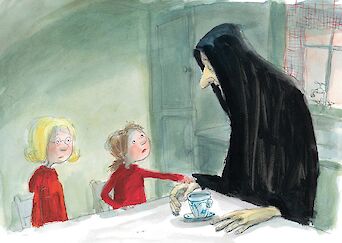Great storytelling lets grieving children know their tears are OK
If you're supporting a grieving child, stories can be a wonderful antidote to the platitudes and euphemisms children often hear after a death.
 Danish author Glenn Ringtved's book, Cry Heart But Never Break, tells the story of Death coming to visit a family of grandchildren. The children try to keep Death away, but can't. Death is empathetic and gives the children time to say goodbye, but is inevitable. We are asked “What would life be worth if there were no death? Who would enjoy the sun if it never rained? Who would yearn for the day if there were no night?”
Danish author Glenn Ringtved's book, Cry Heart But Never Break, tells the story of Death coming to visit a family of grandchildren. The children try to keep Death away, but can't. Death is empathetic and gives the children time to say goodbye, but is inevitable. We are asked “What would life be worth if there were no death? Who would enjoy the sun if it never rained? Who would yearn for the day if there were no night?”
I often hear grieving adults saying that they don't want to cry in front of their children, because they don't want to upset them. But of course that leaves children worrying that maybe their adults aren't sad about the person who's died. Or they may believe their adults are sad, but see that they're being "strong" and keeping their sadness to themselves. This is why I love Cry Heart But Never Break. It acknowledges the sadness that comes with death, and lets kids know that their hearts can cry. But also reminds them that they are strong, and that their hearts won't be broken forever.
It introduces grief, in other words.
November is Children's Grief Awareness Month, so if you know a grieving child, this beautiful, profound picture book would make a great gift.